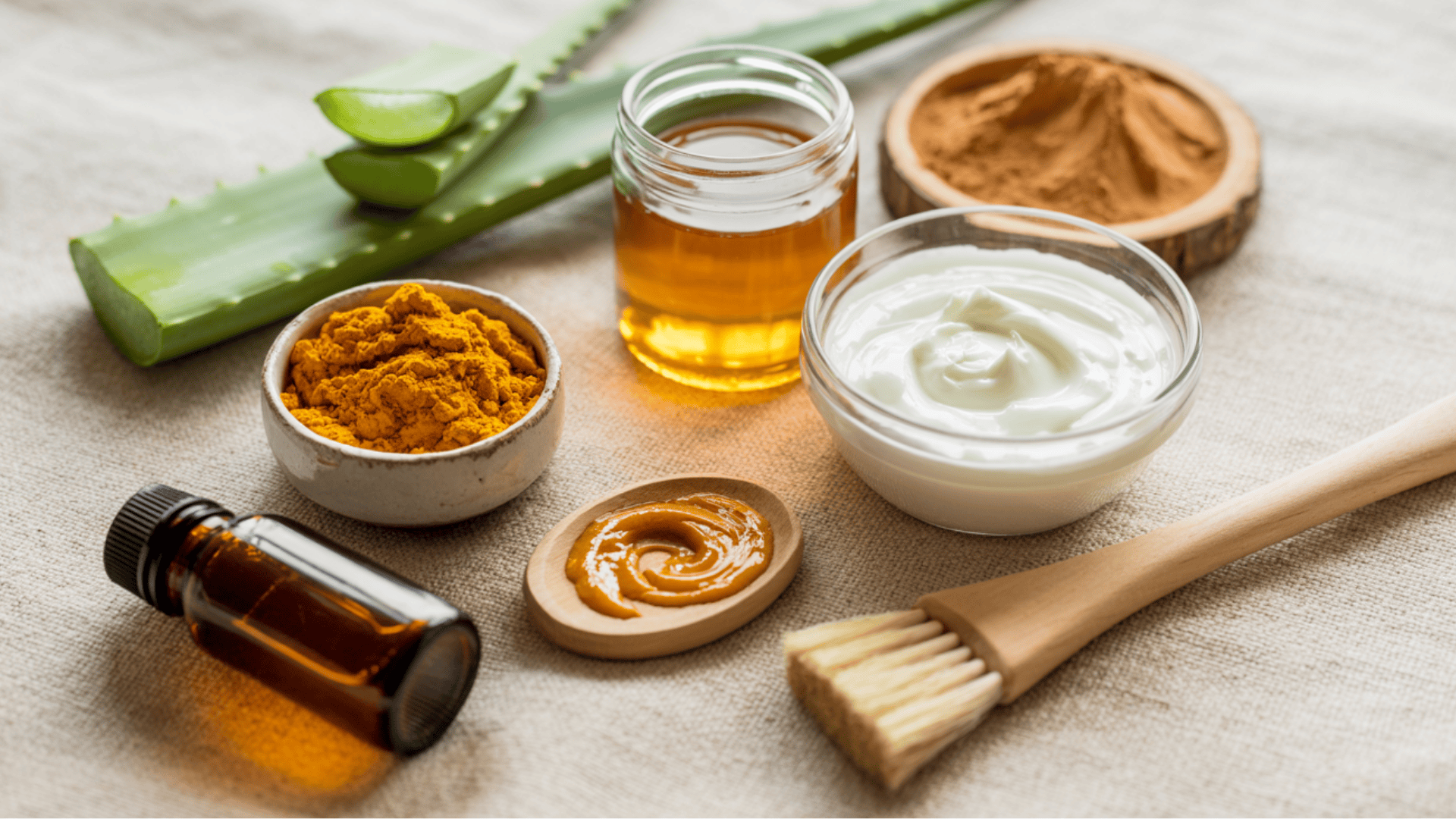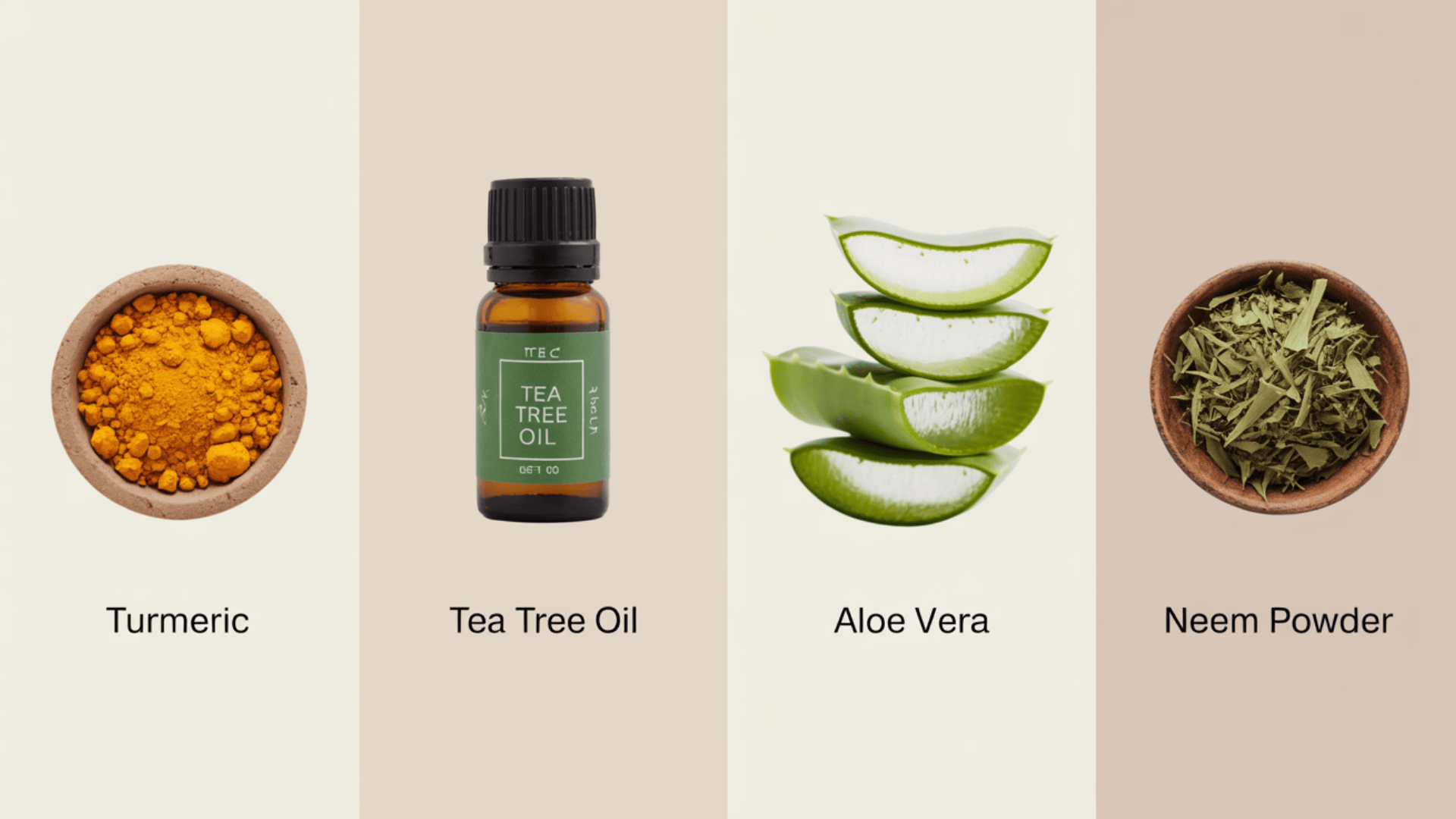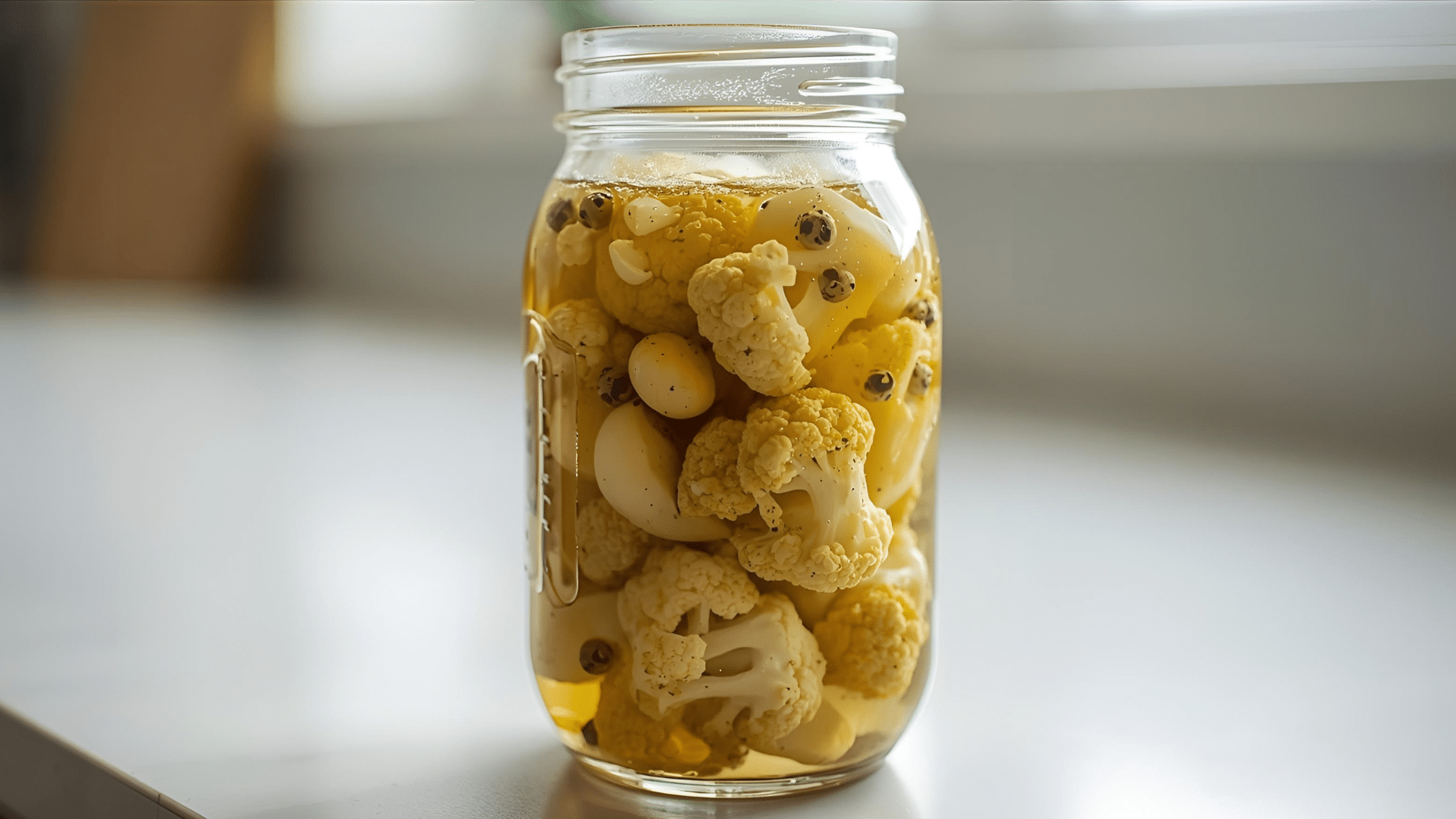Struggling with acne can be frustrating, especially when harsh treatments don’t seem to help. That’s why many people are turning to natural options like turmeric. Known for its soothing and healing properties, turmeric has been used in skincare for centuries.
I’ll talk about how turmeric may help with acne, including how it works, the best ways to use it, and what mistakes to avoid.
You’ll also discover helpful ingredient pairings, safety tips, and how it compares to other natural remedies.
If you’re looking for a gentle, affordable way to treat breakouts, this blog has everything you need to know, starting with how turmeric fits into your skincare routine.
Why Turmeric for Acne?
Turmeric is a bright yellow spice made from the root of the turmeric plant. While it’s often used in cooking, it’s also popular in skincare.
That’s because it contains curcumin, a natural compound with anti-inflammatory and antioxidant properties. Curcumin may help calm red, swollen skin, fight off acne-causing bacteria, and protect the skin from damage.
Turmeric has been used in Ayurvedic medicine for thousands of years to treat skin problems and promote healing.
Today, it’s found in face masks, soaps, spot treatments, and even teas. People love it for its gentle, natural touch and affordable price, making it a go-to choice for anyone looking to treat acne without harsh chemicals.
How Does Turmeric Help with Acne?
Turmeric may help with acne because of its active compound, curcumin. Curcumin has natural anti-inflammatory and antibacterial properties that can calm irritated skin and fight acne-causing bacteria like Propionibacterium acnes.
Some lab studies and reviews, including a 2016 review by the NIH, show that turmeric can reduce skin inflammation and may slow the growth of certain bacteria linked to acne.
However, most of these studies were done in labs or on small groups, so there isn’t enough strong proof yet.
While the early results are promising, more high-quality research is needed to confirm how well turmeric works for acne.
Ingredients to Mix with Turmeric for Acne-Prone Skin


Turmeric works even better when mixed with the right ingredients. These natural add-ins can boost its acne-fighting effects, soothe irritation, and make application easier.
Here are some of the best options to try:
- Honey: Honey is naturally antibacterial and helps fight acne-causing germs. It also keeps your skin soft and prevents dryness, making it a great match for turmeric.
- Yogurt: Yogurt contains lactic acid, which gently exfoliates dead skin cells. When mixed with turmeric, it can help unclog pores and brighten dull skin.
- Aloe Vera: Aloe soothes redness, cools irritation, and hydrates without clogging pores. It’s ideal for sensitive or inflamed acne-prone skin.
- Tea Tree Oil: Just a drop or two of tea tree oil adds strong antibacterial power. It works well for oily skin, but should be used in very small amounts to avoid dryness or irritation.
- Sandalwood Powder: Sandalwood is calming and helps reduce oil. When combined with turmeric, it makes a smooth, cooling paste that may help clear breakouts and fade marks.
You can mix turmeric with one or two of these ingredients to make a face mask that suits your skin. Always do a patch test first to make sure it doesn’t cause a reaction.
Best Ways to Apply and Take Turmeric for Acne
Turmeric can be used in different ways to help with acne. Some people apply it to their skin, while others drink it or take it as a supplement.
Each method has its benefits. Here’s how to use turmeric safely and get the most out of it.
Topical Turmeric Face Masks
Turmeric masks are easy to make at home. Mix a small amount of turmeric with honey, yogurt, or aloe vera. These ingredients help fight bacteria, calm redness, and soothe the skin.
To avoid staining, use only a pinch of turmeric and wash it off after 10–15 minutes. Apply a light moisturizer after rinsing to help clear any leftover yellow tint.
Drinking Turmeric for Clear Skin
Turmeric drinks like golden milk and tea can help reduce skin inflammation from the inside. They’re usually made with turmeric, milk, and black pepper.
Start with one cup a day. Too much can upset your stomach, so go slow. Turmeric supplements are also an option; just follow the label and check with a doctor if needed.
Turmeric can be a helpful part of your acne routine if used the right way.
Whether you put it on your skin or drink it, always test it first and see what works best for you.
Who Can and Who Can’t Use Turmeric for Acne?
Turmeric can help with certain types of acne, but it’s not for everyone. Here’s what you should know before trying it.
- Good for red, inflamed acne: Turmeric’s anti-inflammatory properties may help calm sore, swollen pimples. It works by reducing redness and irritation, making breakouts look and feel less intense, especially helpful for people with sensitive or inflamed skin.
- Helps fade acne marks: With regular use, turmeric may lighten dark spots or leftover acne marks. Its brightening effect can even out skin tone over time, helping your skin look clearer and more balanced after breakouts have healed.
- May not work for severe acne: Turmeric is gentle and works best for mild to moderate acne. It may not be strong enough to treat deep cystic acne or skin that produces a lot of oil. Medical treatment may be needed in those cases.
- Can cause yellow stains: Turmeric’s natural yellow color can temporarily stain your skin, nails, or towels. If you use too much or leave it on too long, you might notice a yellow tint that can take time to fade.
- Possible allergic reaction: Some people may have an allergic reaction to turmeric, especially on the face. Signs include itching, burning, or a rash. Always do a patch test on a small area first to check for any irritation.
Turmeric can be a safe, gentle option for many, but it’s best to start slow and pay attention to how your skin reacts.
Turmeric vs. Other Natural Acne Remedies


Many people look for natural ways to treat acne without harsh chemicals. Turmeric is popular, but it’s not the only option out there.
Ingredients like tea tree oil, aloe vera, and neem also offer skin benefits. Here’s a quick look at how they compare so you can find what works best for your skin.
| Ingredient | Benefits | Best For | Caution |
|---|---|---|---|
| Turmeric | Anti-inflammatory, brightening | Red, irritated acne | May stain skin |
| Tea Tree Oil | Antibacterial | Oily skin acne | Can be drying |
| Aloe Vera | Soothing, hydrating | Sunburned or sensitive acne | Mild effect |
| Neem | Antimicrobial | Fungal or hormonal acne | Strong scent |
Each of these ingredients has its strengths. Choose the one that fits your skin type and acne needs, and always patch test before using something new.
Mistakes to Avoid When Using Turmeric on Skin
Turmeric can be helpful for acne, but using it the wrong way may cause more harm than good. Here are some common mistakes to watch out for so you can get the best results without side effects:
- Using too much turmeric: A little goes a long way. Using too much can stain your skin yellow or irritate sensitive areas. Just a pinch is enough for most face masks.
- Leaving it on too long: Turmeric should stay on your skin for about 10–15 minutes. Leaving it on overnight or for hours can lead to dryness, irritation, or stubborn yellow stains.
- Skipping the patch test: Even natural ingredients can cause reactions. Always test a small amount on your arm or behind your ear first, especially if you have sensitive skin.
- Mixing it with harsh ingredients: Avoid combining turmeric with strong acids or active treatments like retinoids or salicylic acid. These combos may cause burning, peeling, or redness.
- Using it too often: Daily use can be too much for some skin types. Start with 2–3 times a week and adjust based on how your skin responds.
Being mindful of these simple tips can make turmeric a safe and gentle part of your skincare routine.
Conclusion
Turmeric is a natural, gentle option that may help reduce acne and improve skin when used the right way. Now that you know how it works, how to apply it, and what to avoid, you can decide if it fits your skincare routine.
From calming breakouts to fading marks, turmeric offers simple ways to care for acne-prone skin. Just remember to start slow, patch test, and be patient with results.
If you’ve been wondering, does turmeric help with acne? This guide gave you the answers you need.
If you’re looking for more natural skincare tips, check out my other blogs for easy, trusted advice that helps you feel confident in your skin.
Frequently Asked Questions
Does turmeric interact with other skincare ingredients?
Yes, turmeric may irritate skin when used with strong actives like AHAs, BHAs, or retinoids. Use it on alternate days or keep routines simple to avoid reactions.
Can I leave turmeric on my face overnight?
It’s not recommended to leave it on too long, as it can cause staining or irritation. Stick to 10–15 minutes and rinse thoroughly.
How often should I apply turmeric to my face for acne?
Start with 2–3 times per week. If your skin handles it well, you can slowly increase the amount, but daily use may be too much for sensitive skin.
Can turmeric make acne worse before it gets better?
Sometimes. It may cause purging or irritation, especially if your skin is sensitive. Always patch test and introduce it slowly.










